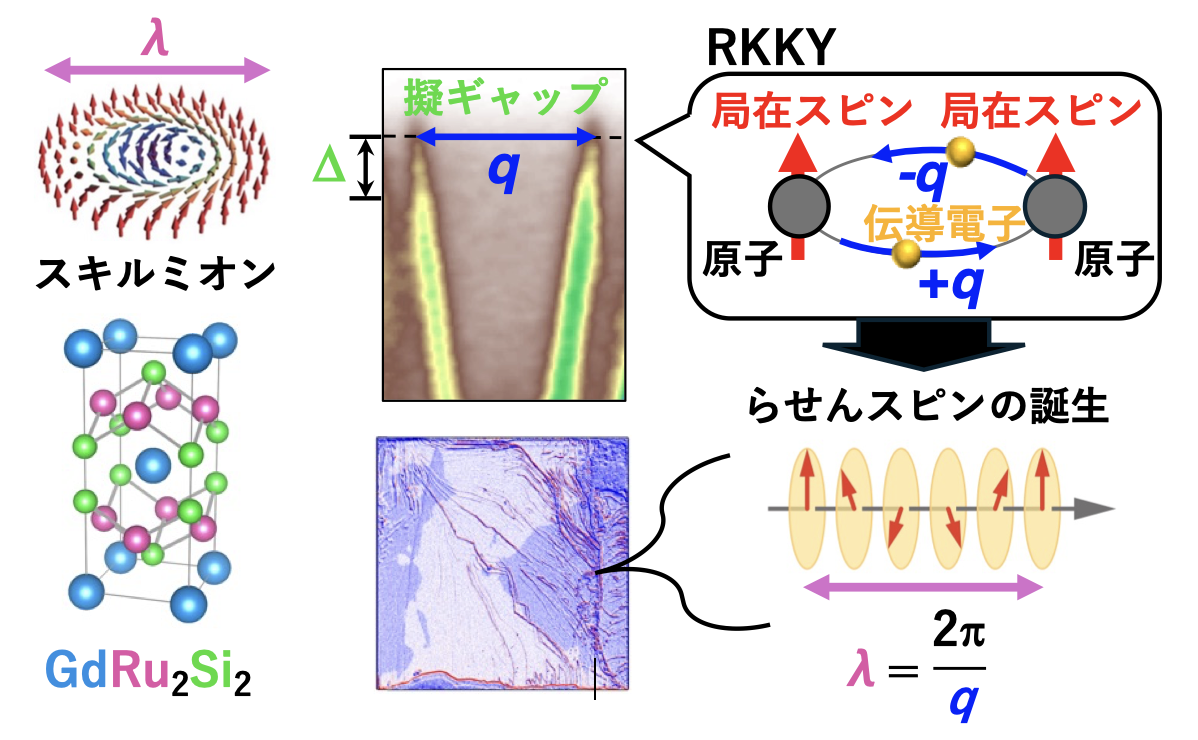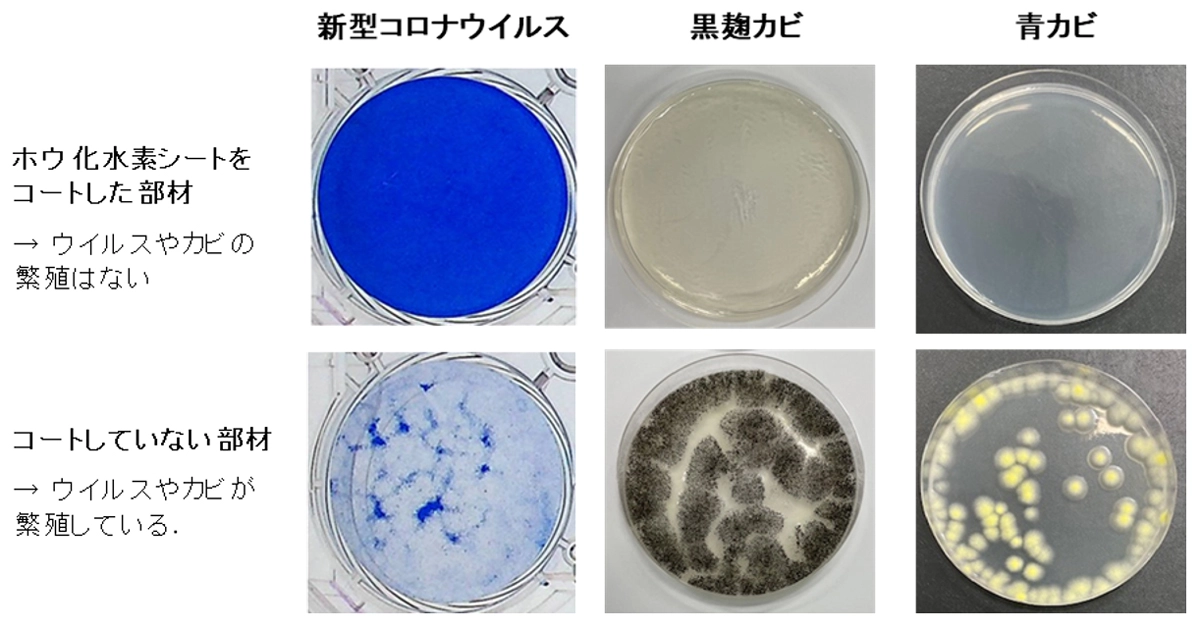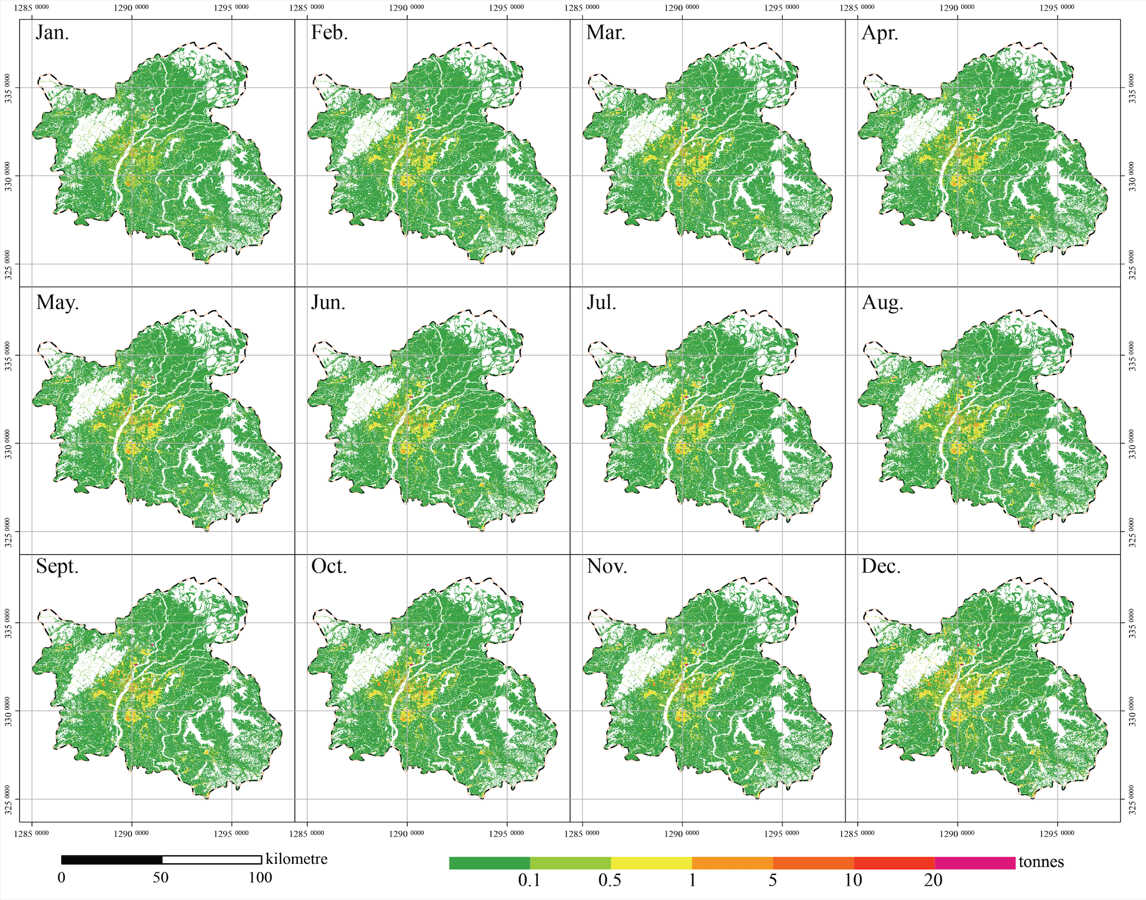2025-05-09 東京大学,大阪大学,東京都立大学,北海道大学

「電子の地図」に刻まれた伝導電子の運動量によって、スキルミオンのサイズが決まる
<関連情報>
- https://www.issp.u-tokyo.ac.jp/maincontents/news2.html?pid=27110
- https://www.issp.u-tokyo.ac.jp/news/wp-content/uploads/2025/05/0509_skyrmion_web.pdf
- https://www.science.org/doi/10.1126/science.adj7710
フェルミ面のネスティングによって誘起される擬ギャップとフェルミ・アークが中心対称性スキルミオン磁石に誘起される Pseudogap and Fermi arc induced by Fermi surface nesting in a centrosymmetric skyrmion magnet
Yuyang Dong, Yuto Kinoshita, Masayuki Ochi, Ryu Nakachi, […] , and Takeshi Kondo
Science Published:8 May 2025
DOI:https://doi.org/10.1126/science.adj7710
Editor’s summary
Skyrmions, whirlpools of magnetic spin that hold promise for spintronics applications, usually occur in materials that lack a center of symmetry. They have also been observed in centrosymmetric materials, where they can be as small as a few nanometers, but the mechanism for their formation is not well understood. Dong et al. used photoemission measurements to access the electronic structure of GdRu2Si2, a centrosymmetric material featuring a skyrmion phase. The researchers focused on the ground state from which the skyrmion phase arises. Photoemission revealed the emergence of the so-called Fermi arcs, as well as a pseudogap. These findings will help to distinguish between the various theories of skyrmion formation in this class of materials and may also lead to practical applications. —Jelena Stajic
Abstract
Skyrmions in noncentrosymmetric materials are believed to occur due to the Dzyaloshinskii-Moriya interaction. By contrast, the skyrmion formation mechanism in centrosymmetric materials remains elusive. Here, we reveal the intrinsic electronic structure of the centrosymmetric GdRu2Si2 by selectively measuring magnetic domains using angle-resolved photoemission spectroscopy (ARPES). We found robust Fermi surface (FS) nesting, consistent with the magnetic modulation q-vector detected by the previous resonant x-ray scattering measurements. The pseudogap opens at the nested FS portions, which vary for different magnetic domains. The anomalous pseudogap disconnects the FS to generate Fermi arcs with twofold symmetry. These results indicate that the Ruderman-Kittel-Kasuya-Yosida (RKKY) interaction plays a decisive role in generating the screw spin modulation responsible for the skyrmion formation in GdRu2Si2. Furthermore, we demonstrate the flexible nature of magnetism in GdRu2Si2 by manipulating magnetic domains with magnetic field and temperature cyclings, providing potential future applications for data storage and processing devices.



